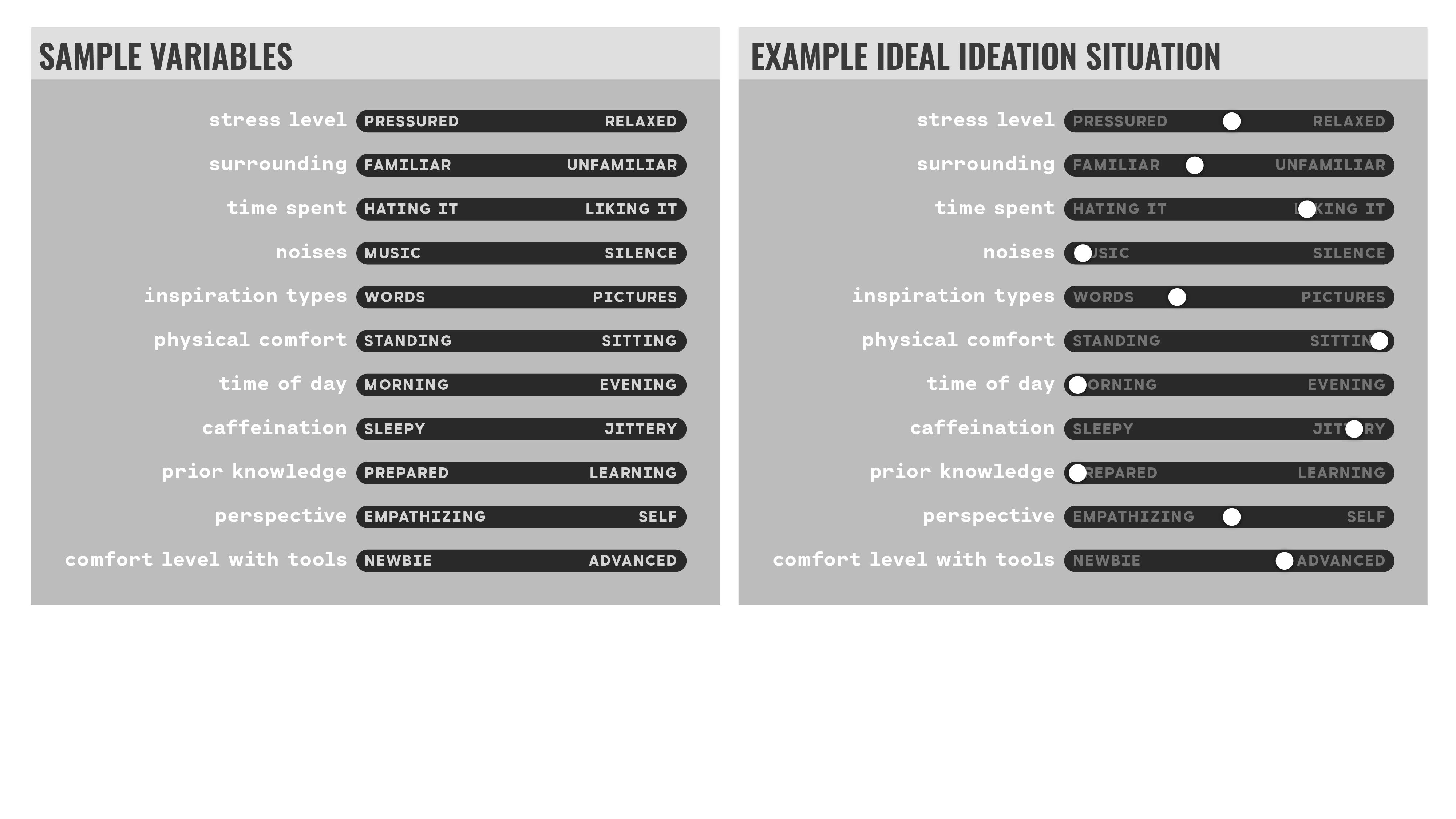Even in Creative Work, Process Makes Perfect
Even in Creative Work, Process Makes Perfect
Sedona Rigsby | Senior Designer
July 3, 2018
Creative people and those deemed “creatives” do not all derive their ideas from a mystical rainbow-colored soup that exists in their heads. They, like everyone, work for it.
Brilliant creative business leader, Marty Neumeier, humbles the creative process, preaching that “designers don’t solve problems - they work through them”. It requires training - training that is intrinsically guided and expressed in external forms. It is a discipline, learned through experimentation.
What this process looks like in actuality is formed around and by an individual. Just as everyone has seemingly mundane personal preferences - how they take their coffee - people have a personal perception informed by past experiences. This perspective, in combination with a unique personality, makes a personal creative process concoction that an individual can depend on when working through creative problems.
For example, my personal creative process is entirely dependent on constraints. The majority of the effort is put into building as many limitations as I can around a goal, not coming up with as many ideas as I can. I do this until I have few options and can use intuition to make decisions. In my talk at P2Con (Phase2’s annual company conference) in New Orleans, I used the following algebra equation metaphor to describe how I think.
My Ideation Equation: constraints (research · medium) + intuition
Some people start with sketching. Some people start with word clouds. I often make a two column list, one labeled “is” and the other “is not”. This applies to my personal craft and my professional design career, more broadly, this is my style of problem-solving. Knowing the size of the final product or limiting a print to a single color (often cheaper) makes the constraint list longer and, thus, better.
The reason constraints are so helpful to me is that I often know what I don’t like more than what I do. Sometimes revulsion is helpful information - so I expose myself to as much as a possibly can.
Dependable creative processes come in a huge range of forms. Famous creatives have some extreme and dramatic methods that they used to generate ideas. Eighteenth-century novelist, Balzac would drink extreme amounts of coffee on an empty stomach. Artist, Salvador Dali would situate himself to think on the brink of sleep. Elizabeth Gilbert, the contemporary author, finds her creativity thrives with persistence and so she writes every day.
Balzac’s Ideation Equation: coffee10 + pen
Dali’s Ideation Equation: (cat nap) - actual sleep
Elizabeth Gilbert’s Ideation Equation: (3h · writing)∞
Developing a dependable creative process is usually not an odd experiment in extremist methods. But it does require experimentation. Tracking what variables affect their mindset and creative output is how creatives can learn how to achieve when they need to access different creative threads.

For example, I have different environments I go to for different types of thinking. Like a specific coffee shop for writing and a tea shop for researching. When I’m thinking of ideas, or ideating, I usually enjoy the limitations I’m forming and am comfortable. I like the problem I’m solving. But when I’m executing on it, I have an intense period of self-loathing. This is normal.
Improve Your Craft With Practice
I’d like to draw specific emphasis on the last slider because comfort level with tools is extremely important to creatives. Proficiency in a craft allows for craftspeople to 1) rapidly iterate, making it easier to work through ideas faster and 2) adds emotional comfort to the process. They’re not learning a new program or instrument while thinking of new ideas. It is unrealistic to do both at once. Art schools teach students to solve problems and then gives them the tools and structure to experiment in their craft. The real value is that students then have four years to experiment and learn their craft.
The creative field is rife with misunderstanding about the creative process - it is almost a gated secret - because sometimes ideas really do seem like magic. Coming up with design solutions, and making beautiful things is not a giant mystery. It is essentially hard work, self-examination, and persistence.
Everyone Is Creative... Really
I truly believe that everyone is creative. If you don’t think you are, examine if you have an unconventional creative process, or if you have toxic misconceptions. Do you think that you solve problems that are too linear to be considered creative? That’s true for me, even when I’m designing. Do you think that all the ideas you have are unoriginal? That’s true for everyone! Do you think that you don’t have the technical capability to execute your ideas? Well, that’s true for everyone for a long time before they feel comfortable. The unexceptional reality of the creative process is that it is actually rather common.

